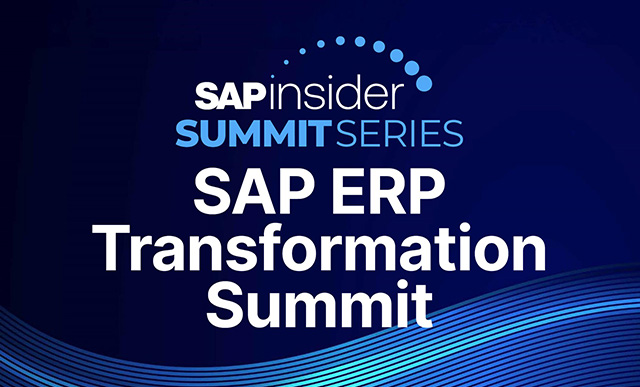SAP SuccessFactors
Filter By
Browse By
- SAP Analytics and AI
- SAP Application Development and Integration
- All SAP Application Development and Integration
- SAP ABAP
- SAP ABAP Development Tools
- SAP ABAP Test Cockpit
- SAP API Management
- SAP BAPI
- SAP Basis
- SAP BRF
- SAP Business Application Studio
- SAP CMS
- SAP Design Studio
- SAP Development Tools
- SAP DevOps
- SAP EAI
- SAP EDI
- SAP Extension Suite
- SAP Fiori
- SAP Fiori Elements
- SAP Integration Suite
- SAP Low Code Application Development
- SAP Low Code Automation
- SAP Netweaver
- SAP Release Management
- SAP UI5
- SAP Web Application Server
- SAP Web IDE
- SAP Business Process Management
- SAP Center of Excellence
- SAP CIO
- SAP Customer Experience
- SAP Data and Data Management
- All SAP Data and Data Management
- SAP BW
- SAP BW/4HANA
- SAP Crystal Reports
- SAP Data Archiving
- SAP Data Center
- SAP Data Governance
- SAP Data Integration
- SAP Data Migration
- SAP Data Quality
- SAP Data Services
- SAP Data Strategy
- SAP Data Visualization
- SAP Data Warehouse Cloud
- SAP DMS
- SAP Document Control
- SAP EIM
- SAP ETL
- SAP ETL Tools
- SAP HANA
- SAP HANA Administration
- SAP HANA Deployment Infrastructure
- SAP HANA Studio
- SAP Master Data
- SAP Master Data Governance
- SAP MDM
- SAP Enterprise Architect
- SAP Enterprise Asset Management
- SAP ERP
- SAP Finance
- All SAP Finance
- SAP Accounting
- SAP AR AP
- SAP Asset Accounting
- SAP Billing Systems
- SAP BPC
- SAP BRIM
- SAP Cash Management
- SAP Central Finance
- SAP Controlling
- SAP COPA
- SAP Cost Center Accounting
- SAP Currency Risk
- SAP e-invoicing
- SAP FICO
- SAP Finance Automation
- SAP Advanced Financial Closing
- SAP Financial Consolidation
- SAP Financial Planning
- SAP FX Risk
- SAP General Ledger
- SAP Global Tax Management
- SAP Hyperion
- SAP Order to Cash
- SAP Payment Processing
- SAP Profitability Analysis
- SAP Rebate Management
- SAP S/4HANA Finance
- SAP SWIFT Compliance
- SAP Treasury Management
- SAP Universal Journal
- SAP Governance Risk and Compliance
- SAP Human Capital Management
- SAP Intelligent Technologies
- SAP Platform and Technology
- All SAP Platform and Technology
- SAP Business Technology Platform
- SAP Cloud
- SAP Cloud Connector
- SAP Cloud Integration Platform
- SAP Cloud Migration
- SAP Cloud Platform
- SAP Cloud Providers
- SAP Cloud Strategy
- SAP Digital Signature
- SAP Container Platform
- SAP HANA Enterprise Cloud
- SAP Digital Asset Management
- SAP Smart Forms
- SAP HEC
- SAP Digital Integration Hub
- SAP Hyperscalers
- SAP Infrastructure
- SAP Messaging
- SAP Quality and Testing
- SAP Security
- SAP Spend Management
- SAP Supply Chain Management
- All SAP Supply Chain Management
- SAP APO
- SAP Asset Management
- SAP Business Network
- SAP Digital Manufacturing Cloud
- SAP Digital Twin
- SAP EWM
- SAP IBP
- SAP Inventory Management
- SAP Label Printing
- SAP Logistics
- SAP Manufacturing
- SAP Manufacturing Automation
- SAP MES
- SAP MII
- SAP MM
- SAP MRO
- SAP MRP
- SAP Order Management
- SAP Plant Maintenance
- SAP PLM
- SAP Production Planning
- SAP S&OP
- SAP SD
- SAP SPM
- SAP Supply Chain Planning
- SAP Track and Trace
- SAP Transportation Management
- SAP System Administration
What is SAP SuccessFactors?
SAP SuccessFactors is SAP’s cloud-based suite of human resources software. The SAP SuccessFactors suite is traditionally most known for its talent management tools and offers core HR capabilities through Employee Central and payroll capabilities through Employee Central Payroll.
While SAP still has many customers running its legacy on-premise SAP ERP HCM solution, SAP SuccessFactors is SAP’s primary focus for Human Capital Management (HCM) and Human Experience Management (HXM). As a result, SAP now focuses most of its HR technology innovation and development resources in the HR space on SAP SuccessFactors. Additionally, the vendor plans to end mainstream maintenance for SAP ERP HCM in 2027.
Modules and offerings within the SAP SuccessFactors suite include:
What is SAP SuccessFactors?
SAP SuccessFactors is SAP’s cloud-based suite of human resources software. The SAP SuccessFactors suite is traditionally most known for its talent management tools and offers core HR capabilities through Employee Central and payroll capabilities through Employee Central Payroll.
While SAP still has many customers running its legacy on-premise SAP ERP HCM solution, SAP SuccessFactors is SAP’s primary focus for Human Capital Management (HCM) and Human Experience Management (HXM). As a result, SAP now focuses most of its HR technology innovation and development resources in the HR space on SAP SuccessFactors. Additionally, the vendor plans to end mainstream maintenance for SAP ERP HCM in 2027.
Modules and offerings within the SAP SuccessFactors suite include:
- SAP SuccessFactors Employee Central (Core HR)
- SAP SuccessFactors Employee Central Payroll
- SAP SuccessFactors Employee Central Service Center
- SAP SuccessFactors Recruiting
- SAP SuccessFactors Onboarding
- SAP SuccessFactors Performance & Goals
- SAP SuccessFactors Compensation
- SAP SuccessFactors Learning
- SAP SuccessFactors Succession & Development
- SAP SuccessFactors Workforce Analytics
- Employee Experience Management with SAP Qualtrics
Key SAP SuccessFactors Considerations for SAPinsiders
- SAP is focused on integrating SAP SuccessFactors and its other cloud applications into its broader set of offerings. This focus is especially of interest to organizations using a variety of SAP tools. As companies adopt cloud solutions, integration between those products and the rest of an organization’s technology stack can be a challenge. SAP CEO Christian Klein noted that SAP has been working to bring the same integration experience between SAP SuccessFactors and other apps that traditional SAP ERP HCM had with the on-premise SAP ERP suite of applications.
- Managing cloud releases is different than on-premise releases. SAP SuccessFactors releases updates twice per year, and these updates often provide significant changes to functionality. Most changes are not mandatory, but customers seeking to get the most out of their cloud systems should implement updates where possible. Doing so requires a release management strategy to track the latest updates and encourage adoption. Most updates can be added to SAP SuccessFactors by opting in, a stark change from on-premise releases, which require more technical work.
- Self-service is an important component of cloud HR tools like SAP SuccessFactors. The most successful companies in their HR strategies are utilizing self-service. For example, employee and manager self-service related to time and attendance and performance management are likely to create better employee experiences and generate more efficient HR processes by removing the reliance on an HR employee to complete related tasks and paperwork. In addition, there is a possibility for self-service in more HR areas such as onboarding and learning.
499 results
-

 Premium
Premium
Four Easy Steps for Absence Quota Compensation
Reading time: 10 mins
Learn how to use infotype 0416 (absence quota compensation) to reduce and compensate the balance of infotype 2006 (absence quota) records. Follow this simplified four-step process to set up absence quota compensation methods. Key Concept In the SAP ERP HCM system, the term absence quota denotes a balance of leave time that must be tracked...…
-

- SAP Payroll
 Premium
Premium
Managing the Challenges of Payroll Application Maintenance
Reading time: 14 mins
Companies that implement SAP payroll also have to plan and execute a strategy for application maintenance of the payroll systems. When implementing it globally, they have even bigger challenges for keeping the payroll applications up to date with regulatory and other changes. Compared to other applications, payroll applications need higher maintenance and upkeep due to...…
-

 Premium
Premium
Best Practices to Increase the Effectiveness of Your LSMW Objects
Reading time: 23 mins
Learn how you can implement best practices for developing Legacy System Migration Workbench (LSMW) objects that are easy to use and support. Gain knowledge of how to identify the best situations for using LSMW over other data load methods. Key Concept The Legacy System Migration Workbench (LSMW) is a module delivered by SAP that is...…
-
-

 Premium
Premium
Improve Data Entry Efficiency with CATS User Exits
Reading time: 16 mins
SAPexperts?HRMake the most of the user exits in Cross-Application Time Sheet (CATS) with these expert tips. Key Concept A user exit is a placeholder SAP provides to allow customers to add custom functionality to an SAP transaction without having to perform a system modification. User exits come in various flavors; for example, they can be...…
-

 Premium
Premium
Allow Users to Execute LSMW Objects Without Access to Transaction LSMW
Reading time: 6 mins
Learn a 3-step technique for restricting user access to LSMW to just one assigned data load. Users then can execute a data load without posing a security risk. Key Concept Transaction LSMW is the main transaction for accessing the Legacy System Migration Workbench (LSMW), whichis a tool used to load data into an SAP system....…
-

 Premium
Premium
A Primer on Actual Costing Using CATS
Reading time: 6 mins
Learn how to perform actual costing and specify your activity type rate in Cross-Application Time Sheet (CATS). Find out the three different options for overriding the activity type rate and how to select the option that provides the best balance between your needs and internal constraints such as expertise and project deadlines. Key Concept An...…
-

 Premium
Premium
Streamline the Use of LSMW Objects with Periodic Transfer
Reading time: 7 mins
Learn how to customize Legacy System Migration Workbench (LSMW) Objects for periodic automated data transfers. The periodic transfer functionality can also reduce the number of steps required for the manual execution of LSMW Objects. Key Concept The Legacy System Migration Workbench (LSMW) is a tool used to load large amounts of data (such as SAP...…
-
-

 Premium
Premium
Load Time Data from an External System Into CATS with Ease
Reading time: 11 mins
Learn how to avoid problems when you import time data from a spreadsheet or external systems into the Cross-Application Time Sheet. Selecting the best method to develop an interface is the key to success. Key Concept Cross-Application Time Sheet (CATS) is a standard SAP transaction that allows users to capture time data for multiple SAP...…
-

 Premium
Premium
How to Use Structural Authorizations for Effective HR Strategy and Security
Reading time: 20 mins
Proper SAP ERP HCM security involves more than just assigning traditional security roles to user IDs. Learn the importance of creating an effective SAP HR security strategy and how structural authorizations and position-based security play a role in this strategy. Get recommendations for proper HR security strategy design and the steps for implementing structural authorizations...…
-

 Premium
Premium
Use Mind Mapping to Keep SAP ERP HCM Projects on Track
Reading time: 10 mins
ManagementEveryone who works with SAP ERP HCM faces the issue of getting up to speed with new projects quickly and completely. Learn how mind mapping helps you organize your SAP ERP HCM projects better. This simple method of drawing a structured diagram aids understanding and enables you to identify gaps, dependencies, and priorities. Key Concept...…
Become a Member
Unlimited access to thousands of resources for SAP-specific expertise that can only be found here.
Become a Partner
Access exclusive SAP insights, expert marketing strategies, and high-value services including research reports, webinars, and buyers' guides, all designed to boost your campaign ROI by up to 50% within the SAP ecosystem.
Upcoming Events
-

SAPinsider ERP Transformation Summit
October 22 - 23, 2025
New Orleans, Louisiana
United States
View Event
Related Vendors
Your request has been successfully sent

